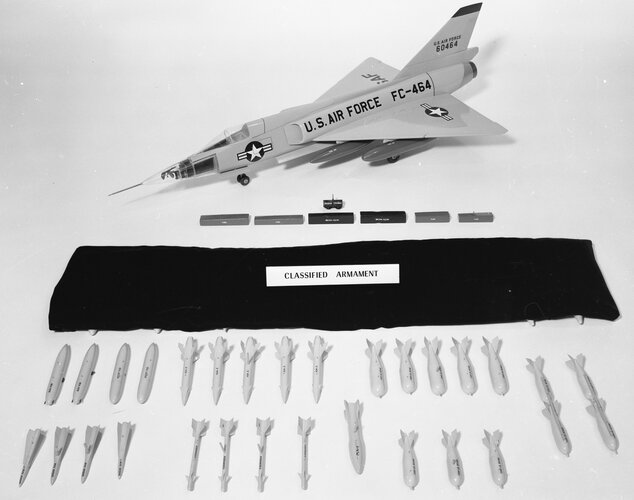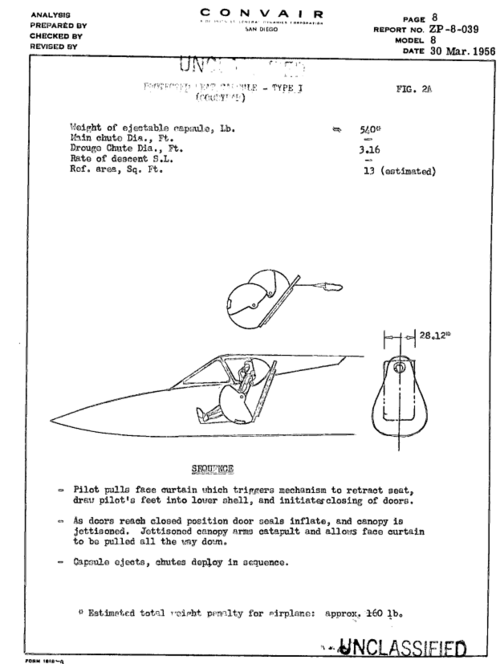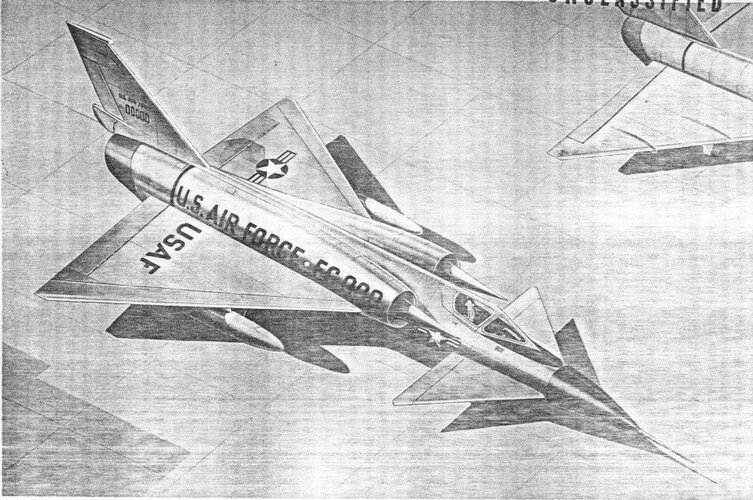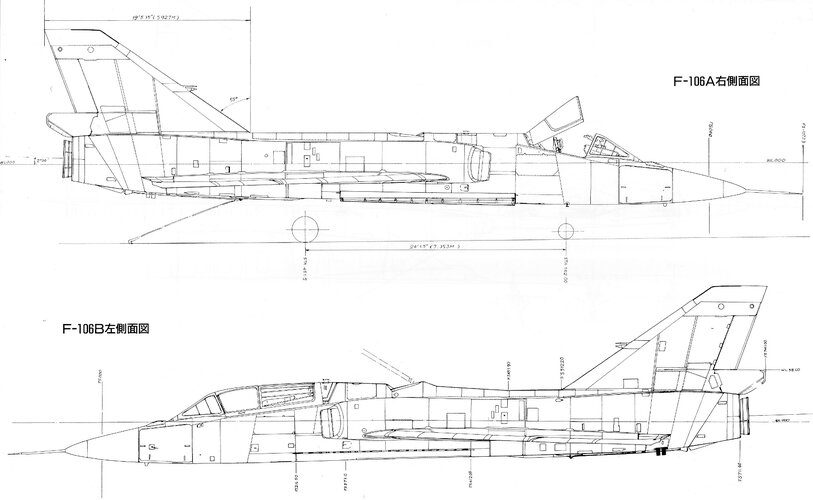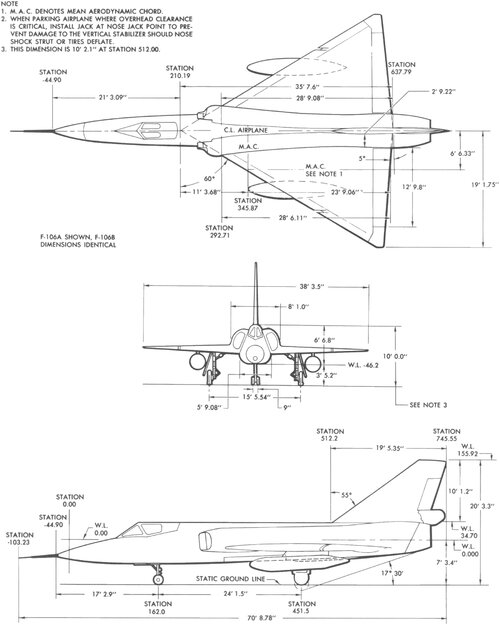I really liked the F-106, whether in A or B form. Just looked like something out of Buck Rogers. The 1930s Buck Rogers not the modern one Star Wars copied from.
The response I recieved from a SAC guy in the early 80s, about why they didn't build more F-106 for protecting the country was something akin to, it looks too much like a Mirage and the Air Force will never buy more jets with turbojets because turbofans are the future. So perhaps pushing old turbojets when shiny new F-15s cost a bit more, and F-16s were quite a lot cheaper, was a bad idea. Just maybe. F-106 could not compete against the 1-2 punch of F-15 and F-16 being procured in a Hi-Lo mix.
The response I recieved from a SAC guy in the early 80s, about why they didn't build more F-106 for protecting the country was something akin to, it looks too much like a Mirage and the Air Force will never buy more jets with turbojets because turbofans are the future. So perhaps pushing old turbojets when shiny new F-15s cost a bit more, and F-16s were quite a lot cheaper, was a bad idea. Just maybe. F-106 could not compete against the 1-2 punch of F-15 and F-16 being procured in a Hi-Lo mix.




